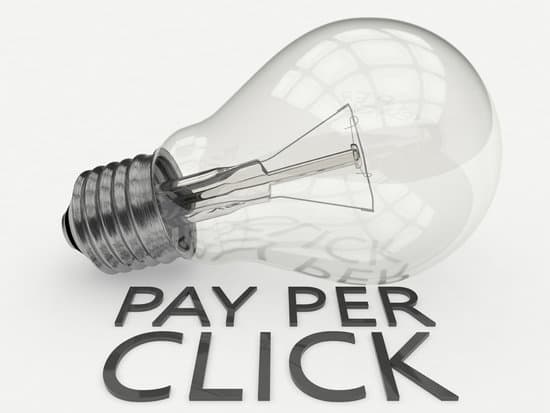We all love free traffic.
That’s why any business looking to grow organically focuses hard on Search Engine Optimization (SEO) to naturally rank high for specific keywords that will drive the most targeted users to your website.
However, just like people in a hurry to quickly exit the freeway at a crowded offramp or assure they’ll have a seat for the opening of the next blockbuster Marvel movie, sometimes we have to jump the line. And to do so, sometimes we have to pay for it.
In digital marketing terms, that’s called Pay Per Click (PPC) advertising.
PPC advertising is an advertising model where advertisers bid on specific keywords to have their “ads” or their website featured at the top of search results. That’s the prime real estate above the organic traffic results and effectively puts your business first and foremost in the user’s eye.
Then, the business, or advertiser, pays a fee each time one of their ads is clicked. This approach allows businesses to precisely target their desired audience based on various factors, such as location, demographics, interests, and search intent.
By displaying their ads at the precise moment when potential customers are actively searching for relevant products or services, companies can capitalize on this heightened interest and drive qualified traffic to their websites.
Here are 9 tips from Avita Group, a five-star rated digital marketing agency in Los Angeles, that includes:
- How to take your keyword list to the next level
- Identifying low-performing keywords
- Adding more negative keywords to your list
- Using customer reviews to your advantage
- Using geo targeting in your ads
- Taking a fresh look at your personas
- Enhancing the performance of your website
- Updating and testing different landing pages
- Becoming more proficient at copywriting
What Is Pay-Per-Click Advertising?
PPC is an online advertising model where advertisers pay each time their ads are clicked. The primary goal is to attract targeted traffic to your website or landing page. A successful PPC campaign will generate more revenue than the cost of the clicks. For example, a $3 click that leads to a $300 sale is obviously a profitable return on investment (ROI).
PPC ads can be text, image, video-based, or a combination of these. They appear in search engine results, websites, social media platforms, and other online channels. Advertisers bid on keywords related to their business to place their ads in front of their target audience.
One of the primary advantages of PPC is its measurability and flexibility. With detailed analytics and tracking capabilities, businesses can gain valuable insights into the performance of their campaigns, enabling them to make data-driven decisions and optimize their strategies for better ROI.
Additionally, PPC campaigns can be easily adjusted and refined based on real-time data, ensuring that marketing efforts remain agile and responsive to market dynamics.
1 – How to take your keyword list to the next level
Keyword lists almost always have room for expansion. Adjectives and adverbs can be added to long-tail keywords, while short-tail keywords may perform better without such descriptive words.
The internet is full of keyword suggestion tools like Ahrefs and SEMRush that can help you find the ideal keyword. Also, you can see what keywords your competitors’ content ranks for and then target them.
2 – Identifying low-performing keywords
The keywords you use can make or break the success of your campaign. When reviewing your keywords, you should check for those that aren’t performing well. A low bid value or low search volume could cause poor performance, but not always. Alternatively, it could mean a high cost per lead.
You might also get fewer clicks if the keyword is too general or restrictive. To figure out why your keywords aren’t performing well, we recommend experimenting with your bidding strategy. If this does not help, you may consider pausing the process.
3 – Adding more negative keywords to your list
Regularly expanding and monitoring your negative keyword list will help you reduce costs and improve campaign performance. A negative keyword, also known as a “negative match,” is one you do not want to trigger your ad with. Negative keyword lists help weed out “window shoppers” and leads that might not convert.
Your paid search campaign may not be converting at the rate you’d like, or you may not have a strong keyword list. It’s beneficial to have a negative keyword list, regardless of your PPC campaign type, so you don’t waste ad spending on unqualified clicks.
4 – Using customer reviews to your advantage
Are your products, services, or brands receiving geat online reviews? PPC campaigns can benefit from them. You can display ratings as part of an ad for any product or service using a seller ratings ad extension. In addition to establishing trust, this will also boost your clickthrough rate.
Working with a trusted review provider is key to collecting valuable feedback. Data is currently collected from a select group of third-party review sites that are pre-approved by Google.
A Guide To Choosing Review Providers
If you want to successfully collect feedback, you need to choose the right review system. When choosing a review platform, you should ask the following questions:
- Are product ratings available from the review provider?
- Do you know if the review provider is one of Google’s licensed content partners?
- Is every review verified?
- Is it possible to get a review from previous customers?
- Can you respond to negative reviews?
- Are you able to share reviews on social media (Twitter, Facebook, and Google+)?

It’s important to maximize your PPC campaign – you’re spending money after all
5 – Using geo targeting in your ads
A good way to manage your ad targeting is to target specific locations where your products or services are relevant and available. By using your paid search platform’s geographic reporting features, you can determine which regions you may want to target.
If you use Google Ads, look at your Locations and Distance reports for performance data by location. You can then use the Location targeting setting to choose specific areas in which your ad will appear, helping you reduce campaign costs and improve ROI.
6 – Taking a fresh look at your personas
Now is a good time to review current client and prospect demographics if you haven’t done so in a while. Data like this is typically stored in customer relationship management tools.
Consider this question: Does this data align with my ideal client personas?
Your campaigns may need to be adjusted to reach underserved segments of your target audience if they are not. “As consumer preferences change, you don’t want to miss out on potential leads by thinking they’re not part of your customer base,” explains Brad Weber, founder and CEO of the Avita Group, a leading digital marketing agencies in California.
7 – Enhancing the performance of your website
It’s also important to have a fast-loading website since users are more likely to abandon websites that take longer than two seconds to load. Use GTmetrix, Pingdom Tools, or Google’s Pagespeed Insights to check how fast your website loads.
Protect your website and make sure it’s easy to access. The accessibility of a website refers to its ability to be read and browsed by visitors easily. In most cases, these are related to design, such as using the right fonts and breaking up long paragraphs.
Consider some of the rules of thumb for great website accessibility and, as you’re doing so, focus on website security as well. Avoid using HTTP instead of HTTPS – search engines like Google penalize unsecured websites, which may affect your PPC campaign.
8 – Updating and testing different landing pages
How many times have you reviewed your landing page data recently?
Well-designed, optimized landing pages can make the difference between a click turning into a lead or a bounce.
Join the web conversion experts by taking a look at the performance of your landing pages and how they differ from one another. Try A/B testing, and then look for ways to optimize your landing pages to increase action rates, whether it’s a design refresh or a new call-to-action copy.
It is important to remember that the most successful PPC strategies aren’t simply set up and forgotten. Test, analyze, and optimize your PPC campaigns regularly to reach your target audience and beat your competitors.
9 – Becoming more proficient at copywriting
Lastly, copywriting is a crucial part of your PPC campaign. Photos and videos can’t be showcased in these ads because they show up in search engine results. As a result, your copy becomes the focus.
Having the right copy is the key to achieving high-performing PPC campaigns. Hiring experienced copywriters who have worked on similar campaigns is one of the best ways to get a good return on investment for your first few PPC campaigns. Therefore, if you’re a B2B company, for example, you’ll want to hire a B2B copywriter who knows just how to market your product.
And then there’s AI – you know, Artificial Intelligence. A text crutch like Chat GPT can help you create tight ad copy that you can use as is or use as a launching pad for creating your own pitch text.
Final Thoughts
Keep in mind that both SEO and PPC management are inbound marketing strategies, but SEO generates organic traffic, while PPC generates paid traffic. In PPC advertising, advertisers pay for every click, whereas SEO clicks are free and drive organic traffic to your site.
In contrast to SEO, PPC delivers results quickly. The moment your ads go live, potential prospects will see your business when searching for keywords you are bidding on. They are both extremely important in B2B, with combined search averaging 76%.
Keep an eye on your PPC results and data at all times. Taking the time to monitor PPC will ensure the best possible outcome, and the beauty of this marketing approach is that you can see every part of where your funding is going.
With SEO conversion optimization and accurate tracking, you can gain insight into which metrics are performing and which are not, so that you can optimize them accordingly. To improve your conversion rates, conversion tracking should not be a one-time activity.
To stay ahead of your competitors, you must always strive to be better. With these optimization tips in mind, you can enjoy better results from your PPC campaigns and improve their performance.
Need help?
Reach out to the search engine optimization California experts today.
Avita Group – Digital Marketing Agency in California
Avita Group is one of the longest-tenured, five-star rated digital marketing agencies in California. Our clients often have had previous agency experiences and ultimately find a long-term home with Avita Group.
We offer fractional CMO services to boost your brand and your business by maximizing your SEO and PPC management, Online Reputation Management (ORM), and ways to become a LinkedIn ads expert to boost your business.
The Avita Group team boasts a collective experience of over 30 years in the industry led by Founder and CEO, Brad Weber, and has worked with a variety of multi-million dollar companies to help them improve their ROI, build better brand awareness, and mitigate negative online reviews.
Contact us for a free consultation to evaluate how we can transform and elevate your business.
